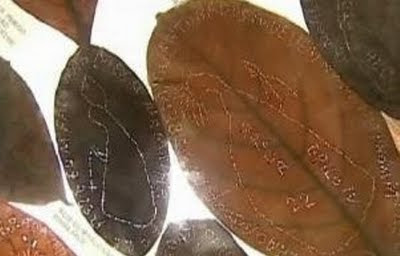MINAS GERAIS state/Brazil – At Itajubá city, south of Minas Gerais state, (in the holiday of 1º of may, 2011), two girls – Michelle Bittencourt, 16 years old e Vanessa Moreira, 17 – found The Death, mysteriously, in the waters of a river (Sapucaí river). The girls were there with relatives and friends. All were swimming in the river when, suddenly, the first girl begun to scream.
A second girl ran to help the other but, the same power that was pulling a one, began to make the same with the other. There wasn't time to aid the girls. Both were engulfed by the waters convulsed.
In the moment in what all happened, nobody understood the the situation. But, the scene was being filmed and by this way the tragedy stood recorded. When the images were reproduced, persons perceived a third element among the girls. A animal that was not possible to identify. The first assumption was that the creature was a snake, a sucuri, Anaconda.
Despite the video, there are controversies. The legist doctor, José Henrique Schuman, said no injuries were found on the bodies to confirm the hypothesis of an animal attack, snake or some other creature. Biologist Flavio Vasconcelos did not rule out that the teenagers have been frightened by the presence of an animal. In this case, the panic would have caused the drowning. The bank of river is shallow but the water deepens become few steps forward. After examining the site, firefighters believe that the victims fell into an open ditch in the sand from the river bottom
The case made headlines. Appeared on TV. Given the controversy, the police of Itajuba city considers the possibility of exhuming the bodies of the two teenagers, who were buried without autopsies.
SOURCES:
Vídeo mostra jovens sendo atacadas por ser não identificado em lago.
IN O Dia,published in 20/05/2011
[http://odia.terra.com.br/portal/brasil/html/2011/5/video_mostra_jovens_sendo_atacadas_por_ser_nao_identificado_em_lago_165802.html]
Cobra pode não ter causado afogamento de adolescentes.
IN EPTV/Globo, published in 22/05/2011
[http://eptv.globo.com/noticias/NOT,4,72,350374,itajuba+cobra+sucuri+afogamento+Meninas+que+morreram+afogadas+podem+ter+caido+em+buraco+no+rio.aspx]
Polícia estuda exumar corpos de adolescente afogadas em rio em MG.
IN R7, published in 27/05/2011
[http://noticias.r7.com/cidades/noticias/policia-estuda-exumar-corpos-de-adolescente-afogadas-em-rio-em-mg-20110527.html]
Vídeo mostra jovens sendo atacadas por ser não identificado em lago.
IN O Dia,published in 20/05/2011
[http://odia.terra.com.br/portal/brasil/html/2011/5/video_mostra_jovens_sendo_atacadas_por_ser_nao_identificado_em_lago_165802.html]
Cobra pode não ter causado afogamento de adolescentes.
IN EPTV/Globo, published in 22/05/2011
[http://eptv.globo.com/noticias/NOT,4,72,350374,itajuba+cobra+sucuri+afogamento+Meninas+que+morreram+afogadas+podem+ter+caido+em+buraco+no+rio.aspx]
Polícia estuda exumar corpos de adolescente afogadas em rio em MG.
IN R7, published in 27/05/2011
[http://noticias.r7.com/cidades/noticias/policia-estuda-exumar-corpos-de-adolescente-afogadas-em-rio-em-mg-20110527.html]


















